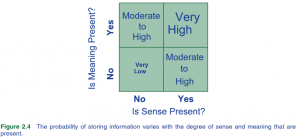What would most motivate you to learn how to calculate the perimeter of a space?
- Someone tells you to learn it.
- You want to fence in an area of your yard and need to know the distance around it.
- Someone tells you you’ll need it for your future.
I don’t know about you, but I would pick b! Clearly, I learned a lot in school just because someone told me to learn it; and I also forgot it after the test.
David Sousa’s research on the brain, from his book How the Brain Learns, points to the need for information to make sense and have meaning in order to be stored in long-term memory. Concepts and skills out of context make no sense and have no meaning to the brain, thus, the reason I promote the use of problem-based learning to drive instruction.
in order to be stored in long-term memory. Concepts and skills out of context make no sense and have no meaning to the brain, thus, the reason I promote the use of problem-based learning to drive instruction.
The core of the Learner-Active, Technology-Infused Classroom is driving instruction through an authentic, open-ended problem. Real-world problems are the best! The purpose is to ensure that learning makes sense and has meaning. The keys to designing a powerful, motivating task are to make it:
- Standards-aligned (It’s too easy to have a great task that doesn’t get the job done!)
- Open-ended, meaning there is no one right answer
- Authentic, meaning the situation occurs in real life
- Have an audience, that is, someone to whom the student could present the solution
- Ensure that the task is aligned well with students’ interest so that they are engaged (grappling) rather than compliant
You might have students:
- Design a solution to a real-world problem, such as the need to decolonize territories throughout the world
- Design a solution to address a local situation, such as the need to build a new playground
- Design a unique work of art or music
- Design an original myth, in the style of past mythological works, to offer a message to teenagers
- Design an argument to shift someone’s perspective
Once you have your problem, and have your students hooked, you must then fill their days with rich and diverse opportunities to learn, so they can, in fact, design the product or performance. Your problem-based task is your strong foundation. Create great problems for your students to solve; change the world!
